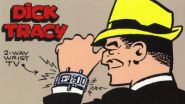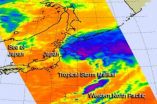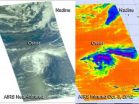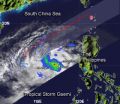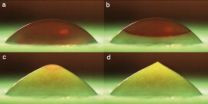(Press-News.org) ALBUQUERQUE, N.M. – Sandia National Laboratories published the second annual 2012 Wind Plant Reliability Benchmark on Monday, and the results should help the nation's growing wind industry benchmark its performance, understand vulnerabilities and enhance productivity.
Until now, wind farm owners and operators had no way to compare their output with the output of similar operations. To benchmark the reliability of the U.S. wind turbine fleet and identify major causes of failures and downtime, the DOE commissioned Sandia in 2010 to build the Continuous Reliability Enhancement for Wind, or CREW, database. This is the first effort to compile a comprehensive, operator-independent dataset that accurately reflects the performance of the U.S. wind fleet.
Every year, Sandia Labs surveys the database and publishes the results to help benchmark the industry. This year, the more than 800 wind turbines studied are either producing electricity or are available to produce electricity 97 percent of the time, up from 94.8 percent in 2011.
"With better understanding of how major turbine systems are performing, wind operators can focus on improving those areas that will drive increased reliability and efficiency," said Sandia researcher and CREW team lead Alistair Ogilvie.
In 2008, a DOE collaborative published "20% Wind Energy by 2030." The report suggests that by 2030, wind could supply 20 percent of the nation's electricity, compared to less than 1 percent in 2007 and 3 percent in 2011. The report also discussed industry-wide risks related to lower-than-expected reliability and growing costs of operations and maintenance.
"Our assignment from DOE is to objectively characterize the national fleet," said Valerie Peters, CREW lead reliability analyst. "We're looking across technologies, locations and companies to create benchmarking statistics for the entire U.S. wind turbine fleet."
Major turbine systems include a set of three blades, rotor, shaft, generator and gearbox, and all of those components might break or otherwise need maintenance. Sandia's team is working to determine which components are the most vulnerable and help industry address those concerns to prevent downtime. The costs associated with a turbine going offline add up quickly. The owner not only loses productivity, but the cost of hiring a crane for repairs can be upward of $250,000. Since only a few cranes in the nation are large enough to handle turbine heights and component weights, it may be months before the turbine is up and running again.
Four wind plant owner/operators are participating in the development phase of the CREW project: EDF Renewable Energy (formerly enXco Service Corporation), ShellWind Energy, Wind Capital Group and Xcel Energy. The CREW team taps into turbines' existing Supervisory Control and Data Acquisition (SCADA) industrial control systems, and Sandia researchers are able to collect high-resolution data from key operating parameters such as wind speed, ambient temperatures, blade angles, component temperatures and torques. Every few seconds, a wind turbine's SCADA system captures a complete picture of how the turbine and its components are performing, compared to a defined operating environment.
Each plant is providing SCADA data to Sandia through a software tool developed by Strategic Power Systems (SPS). SPS developed the automated data collection software originally to collect high-volume data from steam and gas turbines. SPS reengineered its Operational Reliability Analysis Program, or ORAP®, tool to ORAPWind®, which collects data from wind turbines and creates detailed event logs for all non-operating time, in addition to daily summaries of operating time.
Sandia's CREW database contains data for more than 800 turbines, which have generated two terabytes of raw data, about 20 percent as large as the entire print collection of the Library of Congress. Sandia's Enterprise Database Administration Team is processing this enormous dataset into a usable database that can readily support a wide range of rapid queries.
The gathered data is used for various analyses, including public benchmark reporting and DOE reports. The DOE uses its reports to guide research and development investments by identifying critical issues and strategies to improve wind technologies.
The annual public benchmark report characterizes the operations and maintenance experience of the U.S. fleet, using aggregated reliability and performance metrics that lets owner/operators compare their plant against the CREW fleet.
"We're excited about the results so far and look forward to the next few years as we make an important contribution to our industry to improve reliability through a component-level focus," Ogilvie said. "It's an important project that will help encourage increased use of a low-carbon power source, and it could not have succeeded without the outstanding support and leadership of the wind industry and DOE. Together we can share our expertise to help shape the future of the nation's wind energy generation."
###
The CREW Database Wind Turbine Reliability Benchmark and other Sandia wind energy publications are available on Sandia's website at http://energy.sandia.gov/crewbenchmark.
For more information on Sandia National Laboratories' energy work, see the Energy, Climate, & Infrastructure Security website http://energy.sandia.gov/
Sandia National Laboratories is a multi-program laboratory operated by Sandia Corporation, a wholly owned subsidiary of Lockheed Martin company, for the U.S. Department of Energy's National Nuclear Security Administration. With main facilities in Albuquerque, N.M., and Livermore, Calif., Sandia has major R&D responsibilities in national security, energy and environmental technologies and economic competitiveness.
Sandia news media contact: Stephanie Hobby, shobby@sandia.gov, (505) 280-3905
END
To believe that technologies once dreamed of in science fiction novels, television shows, and comic strips may one day be a reality, or that real-world technologies might make the fantastic devices of fiction obsolete, you'd need to be either an optimist…or a futurist in the Department of Homeland Security (DHS)'s Science and Technology Directorate (S&T).
To keep dreams grounded, S&T maintains a team of futurists in Arlington, Va., at the Homeland Security Studies & Analysis Institute (HSSAI). There, in the Resilience and Emergency Preparedness / Response Branch, analysts ...
Tropical Storm Maliksi is putting the final touches on Japan, that is, the edge of the storm was seen brushing the country's northern coast as it pulled away on NASA satellite imagery.
NASA's Aqua satellite passed over Tropical Storm Maliksi on Oct. 4 at 0329 UTC (11:29 p.m. EDT, Oct. 3, EDT) and the Atmospheric Infrared Sounder (AIRS) instrument captured an infrared image of the storm brushing the Tohoku and Hokkaido prefectures of northern Japan.
On Oct. 4, 2012 at 1500 UTC (11 a.m. EDT), the Joint Typhoon Warning Center issued their final advisory on Maliksi. At ...
NASA's Aqua satellite provided two different infrared views of the two tropical storms swirling in the Atlantic Ocean. Oscar is battling wind shear that appears destined to tear it apart, while Nadine is merging with a cold front.
NASA's Aqua satellite passed over both Tropical Storm Nadine and Tropical Depression 15 (TD15) on Oct. 3 at 1553 UTC (11:53 a.m. EDT), before TD15 became Tropical Storm Oscar. While overhead, the Atmospheric Infrared Sounder (AIRS) instrument aboard Aqua captured two different images of both storms. One image was near infrared and almost visible ...
Some of the most powerful thunderstorms in a tropical cyclone surround the center of circulation, and NASA's TRMM satellite noticed that rainfall is heaviest in that area of Tropical Storm Gaemi.
When NASA's Tropical Rainfall Measuring Mission (TRMM) satellite passed over Tropical Storm Gaemi on Oct. 3 at 1241 UTC (8:41 a.m. EDT), the precipitation radar instrument detected light rainfall occurring over most of the storm. Moderate rain was falling at a rate between .78 to 1.57 inches/20 to 40 mm per hour and surrounded a small area of heavy rainfall circling tightly around ...
Researchers at the University of Twente, in the Netherlands, placed water droplets on a plate chilled to -20 degrees Celsius and captured images as a freezing front traveled up the droplet. The photos are published in the American Institute of Physics' (AIP) journal Physics of Fluids. The approximately 4-millimeter diameter droplets took about 20 seconds to freeze. During the final stage of freezing, the ice drop developed a pointy tip, as can be seen in Figure 1d. The effect, which is not observed for most other liquids, arises because water expands as it freezes. The ...
"ChiroSpring is unique in the chiropractic software industry because it combines the most advanced technology with a design that couldn't be easier to use," said Brian Albery, CEO of ChiroSpring. "Doctors want electronic chiropractic software that allows their practice to run at maximum efficiency, but is also easy and intuitive to operate. While other chiropractor software programs force you to choose between functionality and simplicity, ChiroSpring offers an unbeatable combination of both. The best chiropractic software should give doctors everything they ...
Dr. Aristotle Economou will provide a no cost telecall for people who wish to speed up the healing process and spend their time engaging in activities they enjoy. Using over 20 years of experience in the field of Functional Medicine, Dr. Aristotle Economou will discuss techniques on how to actively support the healing process.
Intended for an audience of health- and healing-conscious men and women, Pain Relief at the Speed of Light will provide techniques on how to relieve pain, as well as how to avoid it. The free telecall will highlight recuperation methods in the ...
Zacpac, an independently owned and family run Australian Packaging business again proves that they're not only the pioneers in Australian packaging solutionsbut also are the best in providing fast, quality services and their continued growth has resulted in an all-new factory being built to satisfy demand. The new 8000 square metrestructure takes the total factory operating space to 19,000 square metres.
After purchasing ten acres of land in Ingleburn in 1991 and building the company's first factory in 1994, Ed Zac's vision of expanding the family business, specialising ...
On October 31, 2012 you are invited to participate in Mixed Media Art on Facebook's First Annual Fall Abandoned Art Blitz. The Fall Blitz will be held in your own neighborhood and will ask you to abandon a piece of your own artwork by tying it to a tree and offering it as a gift to a stranger.
Your art project may be in any medium, style, or size that you choose, however it must bear one of the Abandoned Art Fall Blitz 2012 tags, and be labeled as a 'Free Gift of Artwork'. A loose 'theme' inspired by Emily Jane Bronte's poem 'Fall, leaves, fall' may include an interpretation ...
OpticsCentral has recently launched its brand new website in conjunction with launching a brand new retail showroom in the eastern suburbs of Melbourne. OpticsCentral designed this site based on the teams knowledge and experience on how their customers shopped for Binoculars and Telescopes.
"We aim to deliver the best customer service across Australia. Therefore, our customer support team is well trained and experienced at selling these products over the phone and thoroughly explaining the features and expectation of these products to our customers" Andrew ...
